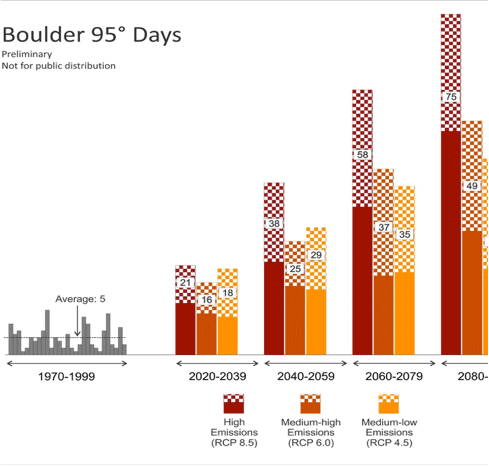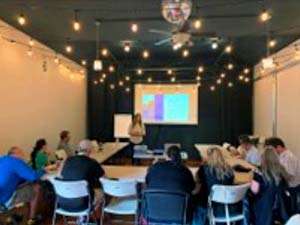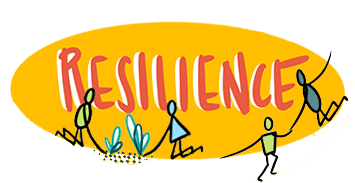

RESILIENCE
The capacity of individuals, institutions, businesses, communities and systems within a city to survive, adapt and thrive no matter what type of chronic stresses or disruptive changes may be experienced
SUSTAINABILITY AND RESILIENCE
Sustainability is the ongoing effort to create stable, prosperous social, economic and environmental conditions. Resilience is the capacity of these systems to undergo disruption and emerge better adapted to new conditions. The two dynamics are in constant interaction.

Colorado is exposed to many serious effects of climate change that make our communities vulnerable. A sector-by-sector analysis from the Colorado Energy Office lays out the challenges that state residents and leaders will have to deal with in the near future, as well as the many ways we already are, as a result of the climate emergency.
MANAGING IMPACTS IN COLORADO

Temperatures will likely increase by 2 to 6 degrees Fahrenheit by 2050. As temperatures increase, risk of heat exhaustion will likely rise, particularly for vulnerable communities. From an economic standpoint, businesses will have higher cooling costs, and rail speeds must drop to avoid track damage, leaving the freight and passenger rail industries vulnerable to slowdowns or the need for expensive track replacements.
TEMPERATURE
Rising temperatures, heat waves and droughts can reduce crop yield and slow cattle weight gain. Colorado farmers and ranchers are already accustomed to large natural swings in weather and climate but may find it especially challenging to deal with expected changes in water resources. This will in turn affect our food supply and economic advantages.
AGRICULTURE
RECREATION
Colorado’s springtime mountain snowpack will likely decline by 2050, with potential impacts on late-season skiing. Spring runoff season may also be earlier and shorter, which could affect rafting. These affect Colorado’s natural resource tourism economy
WATER
The state’s reservoirs can provide some buffering against some expected increases in water demand and decreases in flow, but entities with junior rights or little storage are especially vulnerable to future low flows, creating a disruption in service and an equity issue.

WHERE WE ARE
We must prepare together as a community to mitigate the impacts of these events.
BOULDER HAS ALREADY EXPERIENCED DISRUPTIVE CHANGES
Boulder has one of the highest fire risks of all communities in Colorado due to its close proximity to wildland forests.
Boulder is also one of the highest flood risk communities in the state due to its location at the confluence of multiple mountain drainages.
FIRE
HUMAN CAUSED THREATS
In addition to natural hazards, the community must also be prepared for a range of new hazards that are intentionally caused by humans including cyber security and other acts of terrorism.
FLOOD
DROUGHT AND EXTREME HEAT
The number of days over 95 degrees Fahrenheit in Boulder have already doubled since 2000. On current trajectories, they could increase more than 5 times by 2050—from an average of 4 to more than 25!




RESILIENCE NOW
MULTI-HAZARD DISASTER MANAGEMENT
Working in close collaboration with the County and Office of Emergency Management, the city is working to enhance the city’s organizational preparedness for a range of potential hazards. This process will have multiple opportunities for community input.
BETTER TOGETHER
The city and county are working together to develop and deliver a series of community workshop trainings designed to assist residents in building their personal, neighborhood and community resilience. The next session for Boulder residents starts in October!
CULTURAL BROKERS
Boulder County has initiated a community-based initiative to provide training and technical and financial support to members of the Latino community to assist local governments in finding ways to more effectively involve and engage members of the community that frequently do not feel comfortable taking an active role in public processes.


